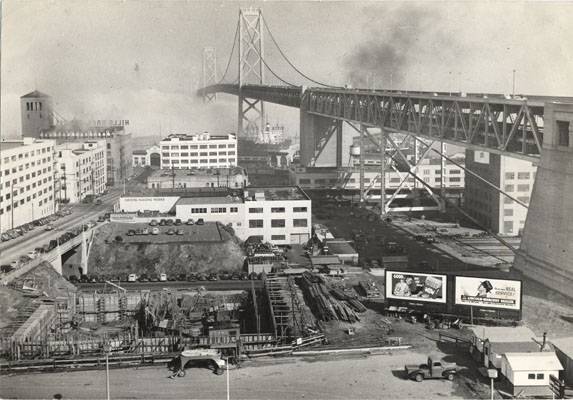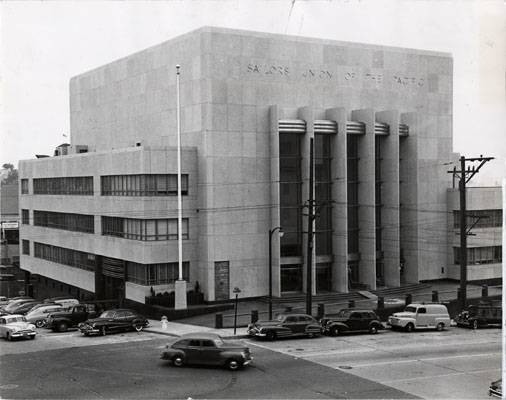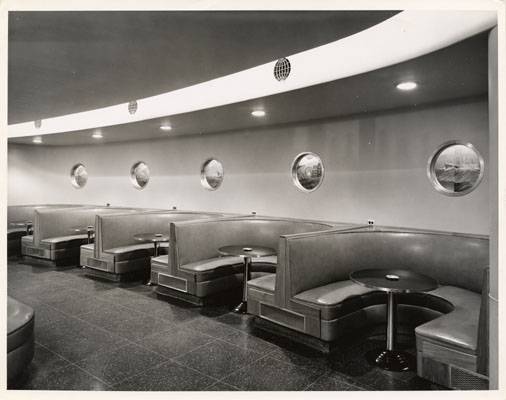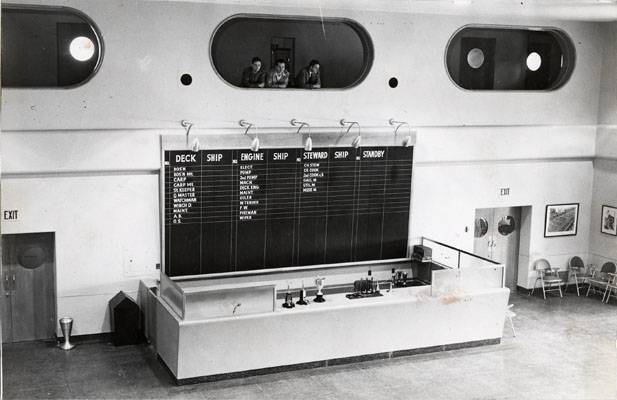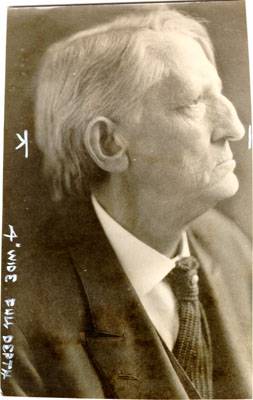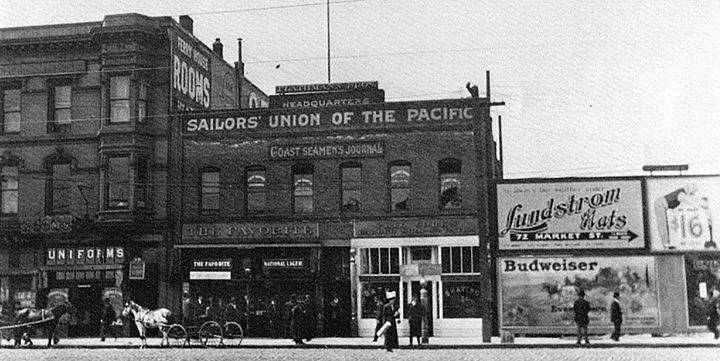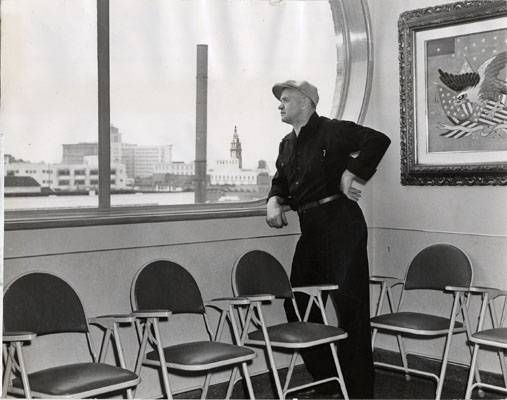Sailors' Union of the Pacific Building: Difference between revisions
added images |
added new photo |
||
| Line 50: | Line 50: | ||
Andrew Furuseth (1854-1938) was a Norwegian sailor who played a major role in strike activities, labor reform, and the legal emancipation of the seaman. In 1886 he was Secretary of the Coast Seaman’s Union, and then Secretary-Treasurer of the Sailors Union of the Pacific from 1891-1936. He was a key figure in the passage of the Seamen’s Act of 1915, along with three other reforms that changed the lives of mariners. | Andrew Furuseth (1854-1938) was a Norwegian sailor who played a major role in strike activities, labor reform, and the legal emancipation of the seaman. In 1886 he was Secretary of the Coast Seaman’s Union, and then Secretary-Treasurer of the Sailors Union of the Pacific from 1891-1936. He was a key figure in the passage of the Seamen’s Act of 1915, along with three other reforms that changed the lives of mariners. | ||
[[Image:Sailors-Union-of-the-Pacific-1880s.jpg]] | |||
'''Sailors Union of the Pacific building along the waterfront in the 1880s.''' | |||
''Photo: Library of Congress'' | |||
[[Image:Harry Lundeberg at the Sailors Union Of The Pacific headquarters June 16 1950 AAD-5686.jpg]] | [[Image:Harry Lundeberg at the Sailors Union Of The Pacific headquarters June 16 1950 AAD-5686.jpg]] | ||
Revision as of 20:12, 30 December 2012
Historical Essay
by Libby Ingalls
The Sailors' Union of the Pacific building was constructed in 1950, providing a permanent home for the maritime union founded in 1885.
Groundbreaking for the SUP building in 1947 at Fremont and Harrison.
Photo: San Francisco History Center, San Francisco Public Library
Construction site at Fremont and Harrison, September 1947, with Bay Bridge nearby.
Photo: San Francisco History Center, San Francisco Public Library
Sailors' Union of the Pacific building at Fremont and Harrison, 1950.
Photo: San Francisco History Center, San Francisco Public Library
Designed by San Francisco architect William Gladstone Merchant, the building is an Art Moderne classic, built of white stone and concrete. At four stories tall, it has a soaring central hall, balconies shaped like parts of a ship, and interior porthole-style windows. Two fine large models of square-rigged sailing ships decorate the lobby.
Interior of SUP building with portholes over tables in cafe.
Photo: San Francisco History Center, San Francisco Public Library
Dispatch Hall in SUP headquarters, September 1950.
Photo: San Francisco History Center, San Francisco Public Library
The Dispatch Hall, or Hiring Hall, is a grand maritime-themed space on the main floor where the union matches sailors with jobs, following a protocol established by the union. Wall cases display proclamations, awards and other memorabilia, while the walls hold photographs, paintings and commemorative prints, along with examples of sailors' folk arts. The building also houses a library, required in all Sailors’ halls by the SUP Constitution, and a 2,000-seat auditorium.
The building serves also as a landmark of labor history, located near the site of the infamous "Battle of Rincon Hill" where strikers fought San Francisco police during the 1934 waterfront strike.
Outside are busts of two labor heroes: Andrew Furuseth and Harry Lundeberg.
Andrew Furuseth, 1928.
Photo: San Francisco History Center, San Francisco Public Library
Andrew Furuseth (1854-1938) was a Norwegian sailor who played a major role in strike activities, labor reform, and the legal emancipation of the seaman. In 1886 he was Secretary of the Coast Seaman’s Union, and then Secretary-Treasurer of the Sailors Union of the Pacific from 1891-1936. He was a key figure in the passage of the Seamen’s Act of 1915, along with three other reforms that changed the lives of mariners.
Sailors Union of the Pacific building along the waterfront in the 1880s.
Photo: Library of Congress
Harry Lundeberg at the Sailors Union of the Pacific headquarters, June 16, 1950.
Photo: San Francisco History Center, San Francisco Public Library
The other bust is of Harry Lundeberg (1901-1957) who led the SUP from 1936 until his death in 1957. Also born in Norway, he came to prominence as head of the SUP Strike Committee in Seattle during the 1934 Maritime Strike. In 1938 he became the founder and president of the Seafarers’ International Union of North America (SIU).


